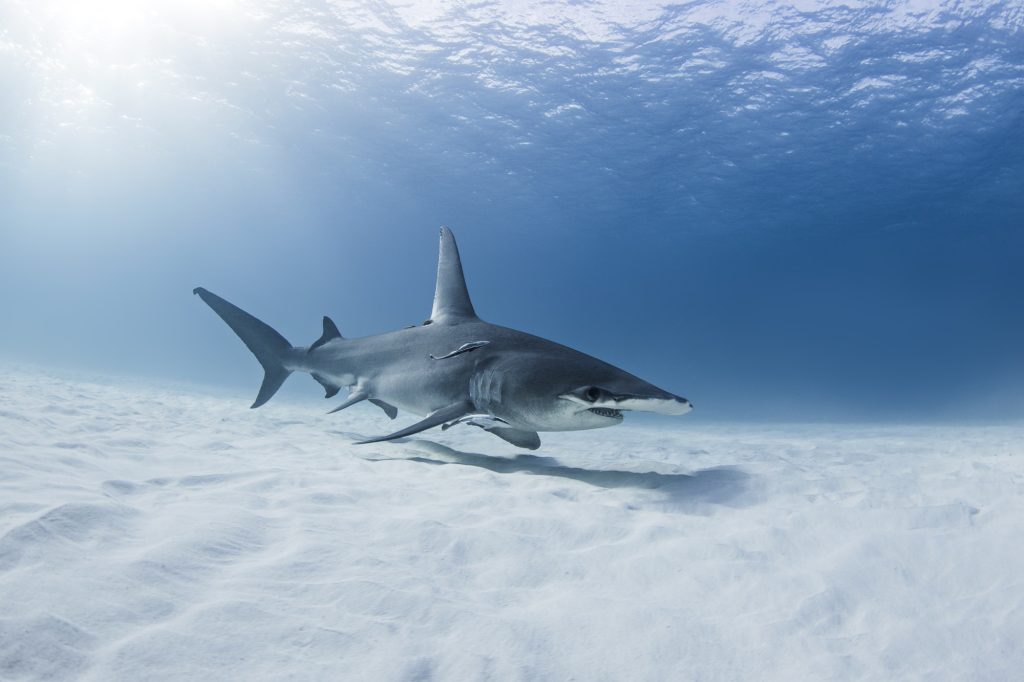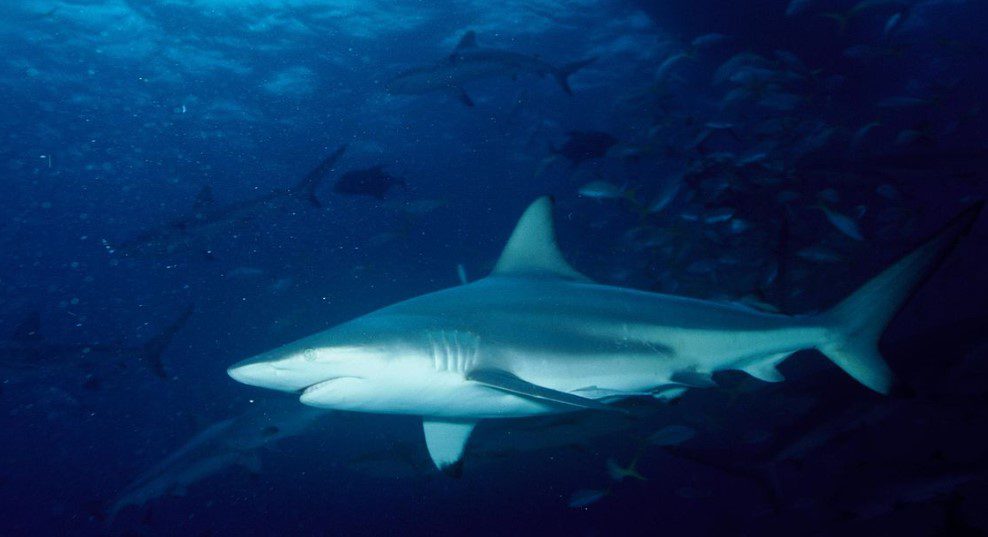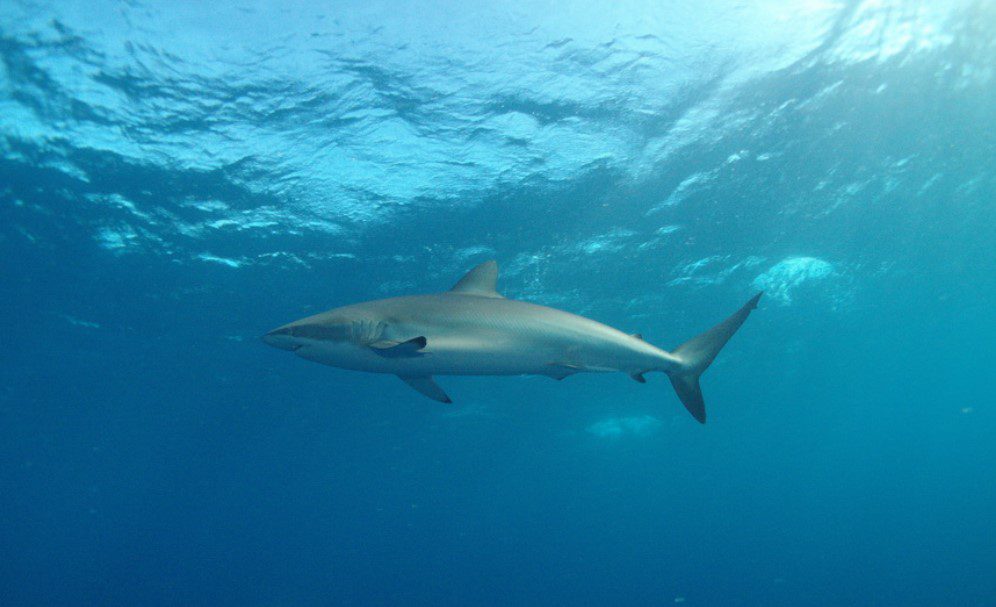The hammerhead sharks in the family Sphyrnidae are among the most uniquely adapted sharks, easily identifiable by their large, flattened hammer-shaped heads. The bizarre head shape maximizes their hunting abilities, and the shape and size functions to enhance maneuverability. The broad under surface provides ample space for electromagnetic-sensory organs called ampullae of Lorenzini, and their eyes are wide set and outward-facing, providing stereoscopic vision.
Great hammerhead sharks use these super-powered senses to hone in on their favorite prey, stingrays, which are often buried in the sand during the day. Unfortunately, the very things that make them unique also make them extremely vulnerable to fishing: their heads get snagged in nets, and their peak-performance physiology makes them tire and die very quickly under stress when captured by hook and line.




